Just over 40 km. It's the electric autonomy I got, on average and without “working” for it, with one of the 5 Series plug-in hybrids, the BMW 530e (there are more, the 520e below and the 545e above).
It was the most frequently asked question I was asked about the pair of revamped 5 Series — Berlina and for the first time in the range, Touring — which I was able to test for nearly two weeks after learning they were plug-in hybrids. The reaction to my answer also turned out to be almost always the same: a frown and a simple: "Just?"
Yes, just over 40 km in electric mode isn't much — and a little far from the official 53 km to 59 km — but it was enough for most occasions, without even denying me to enter expressways and highways (140 km /h of maximum speed in electric mode). Many of us, realistically, don't do that many kilometers a day.
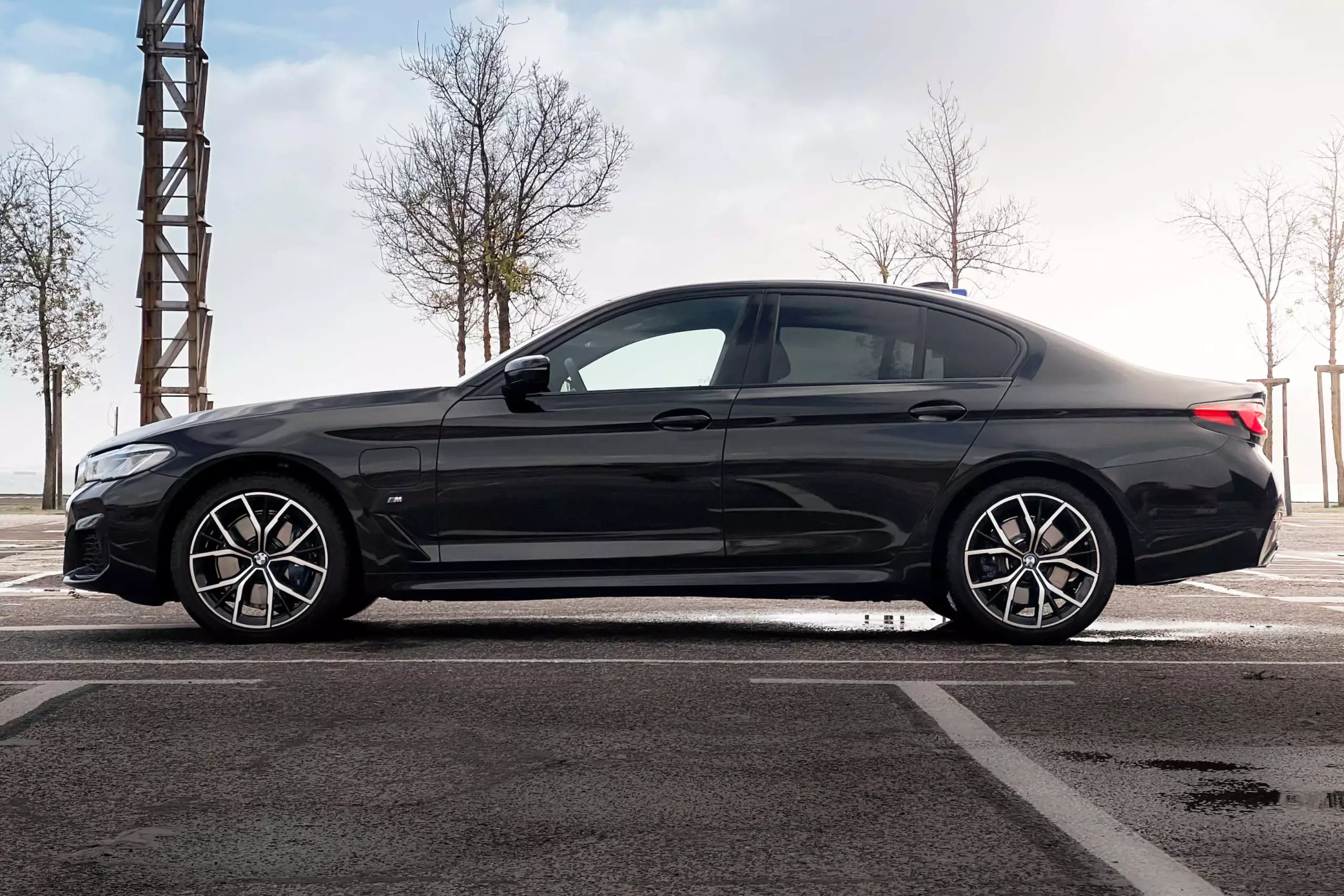
Charging the 12kWh battery does not, fortunately, take all the time in the world either. In a conventional charging station, with the battery practically discharged, three hours were enough to “refill” it.
With the battery full of “juice”, but now in hybrid mode, it's amazing how long the system's electronic “brain” decides to use the electric motor instead of the combustion engine, with this only making itself “heard” when we accelerate stronger or the climbs get steeper.
It is no wonder that on these occasions consumption has regularly and comfortably remained below 2.0 l/100 km, especially on shorter journeys and with more opportunities to recover energy during deceleration and braking.
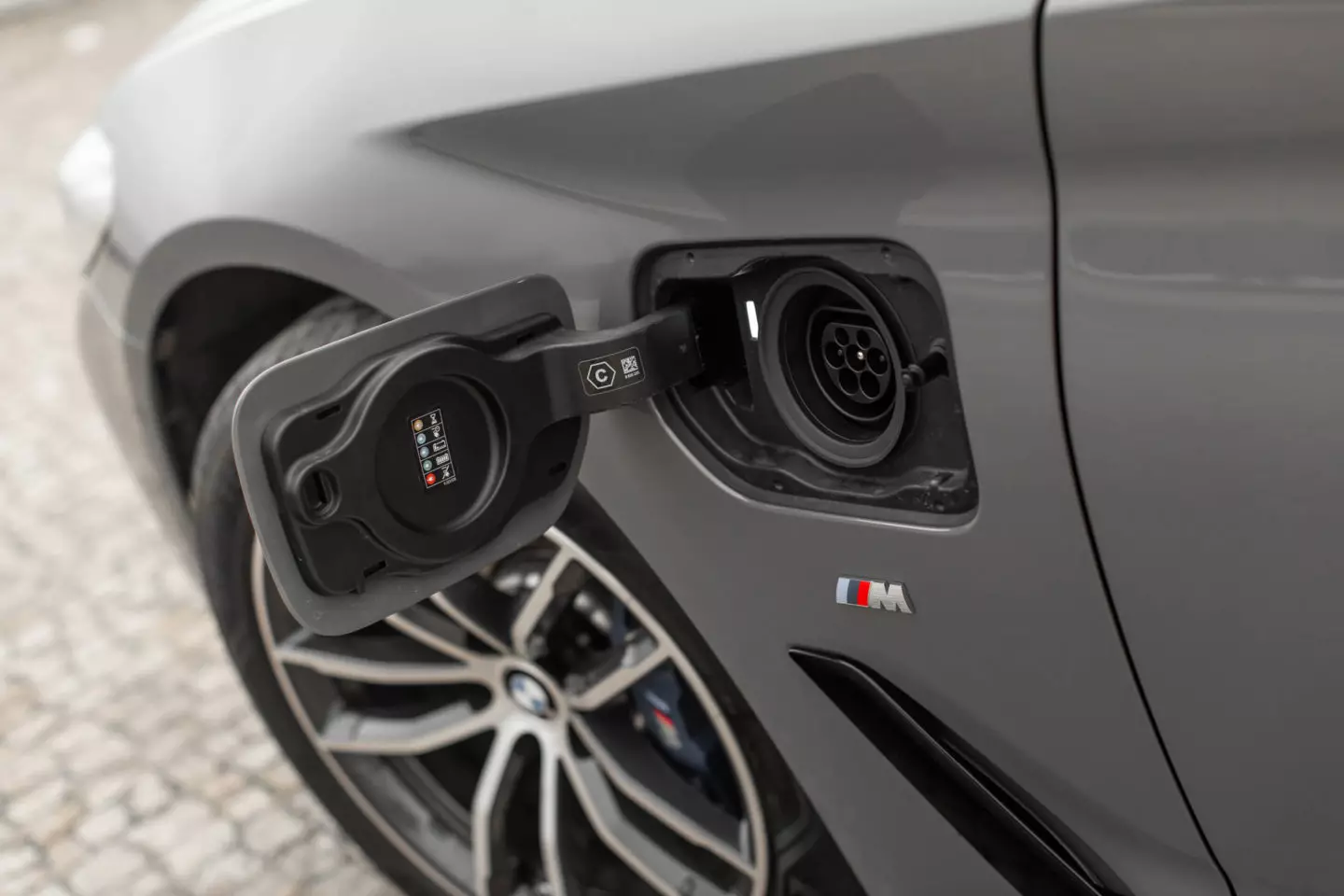
The loading door is located behind the front wheel.
And when does the battery run out?
Naturally consumption will go up, as we are practically dependent on the combustion engine. In the case of the BMW 530e, the combustion engine is a 2.0 liter supercharged in-line four-cylinder engine that produces 184 hp. Enough to maintain highway paces at high and steady cruising speeds.
On these occasions, on the highway, where the combustion engine was the only one in use, the fuel consumption was approximately 7.5 l/100 km — quite reasonable, at the level of much smaller and lighter models than the Series 5 At more moderate speeds (90 km/h) consumption drops to a measured 5.3-5.4 l/100 km. However, go in the usual day-to-day stop-and-go, and consumption goes up to more than eight liters with some ease — charge the battery as many times as possible to avoid such high numbers...
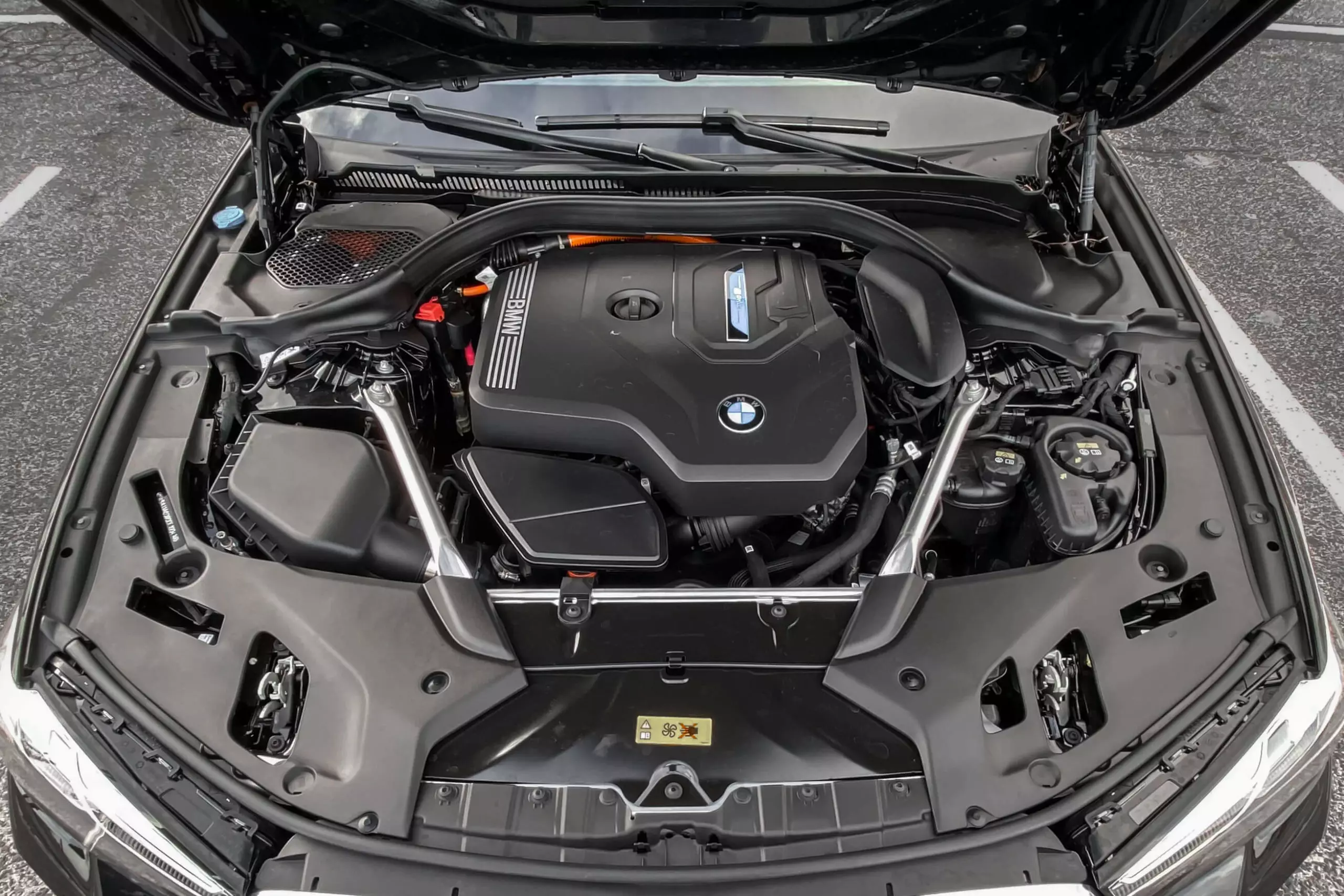
However, if they need all 292 hp, they're still there. Even if the battery is at “zeros” it always seems to have a reserve for these occasions, so that the 109 hp electric motor can intervene in our assistance. Note that the 292 hp is a maximum combined peak power, only available for periods of 10s, courtesy of the XtraBoost function; the regular power is 252 hp.
And "wow", as the electric motor helps...
Even if it comfortably drops beyond 1900 kg (whether it's the 530e Berlina or the 530e Touring) when we've fully explored the combination of hydrocarbons and electrons, the performance on offer convinces at all levels: always available and always in generous quantities — it's all too easy to reach prohibitive speeds without realizing it.
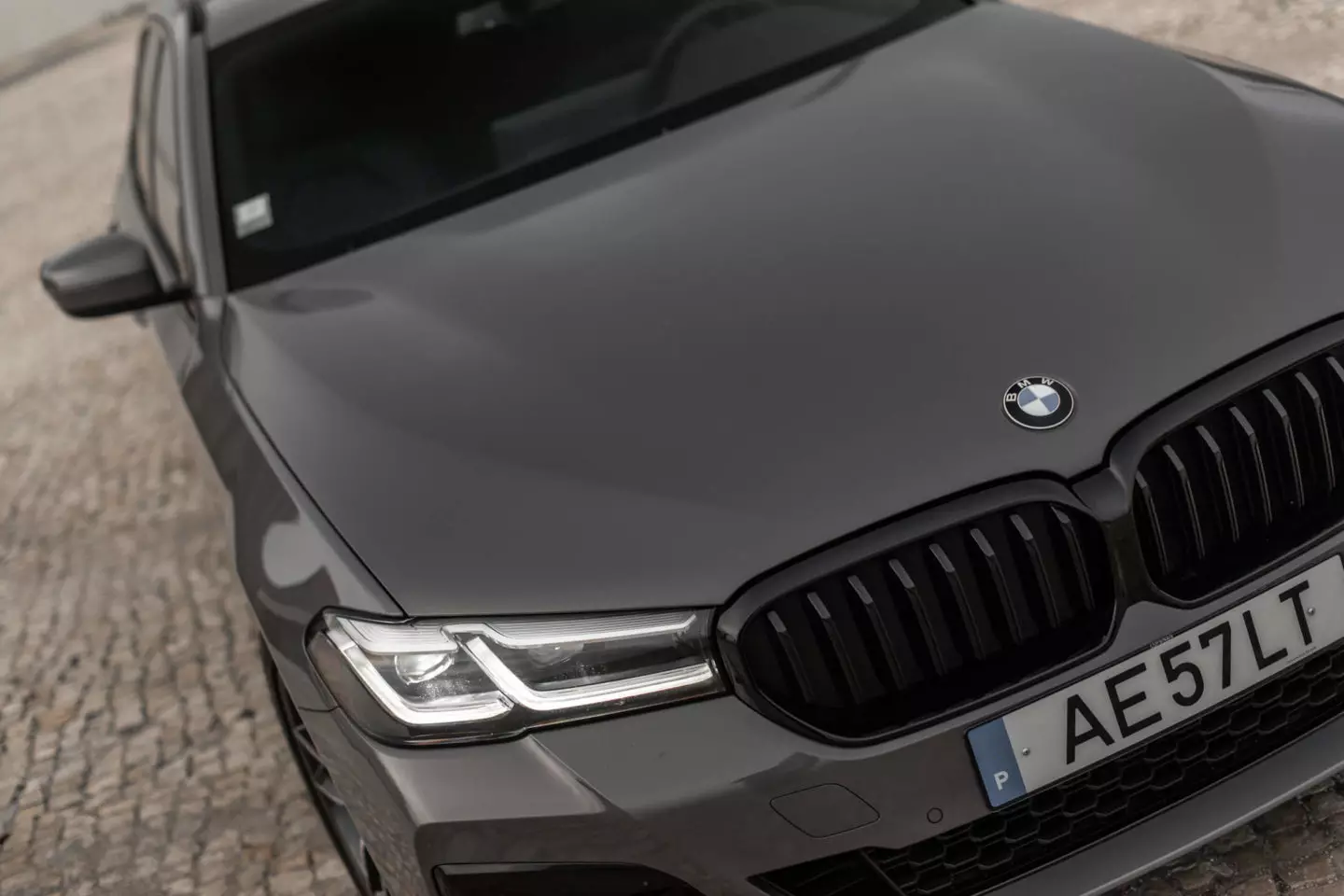
It is at the front that the biggest visual differences can be found in the renewed 5 Series, having received new headlights, grille and bumpers.
All because the numbers are delivered in a very linear and progressive way, without major drama, it's true, but always with a certain intensity. The transmission is also at fault in the registry. The eight-speed automatic is among the best I've tried, and it's only faltering in response—no more than a second—when we suddenly crush the accelerator.
Combined with a cabin that's excellently soundproofed at all levels — the aerodynamic and rolling noises are nothing but faint murmurs, even with the 19-inch wheels and 40-profile tires at the front and 35 at the rear of the sedan — no wonder who, on several occasions during my custody of the two 530e, have been surprised by the numbers presented by the speedometer.
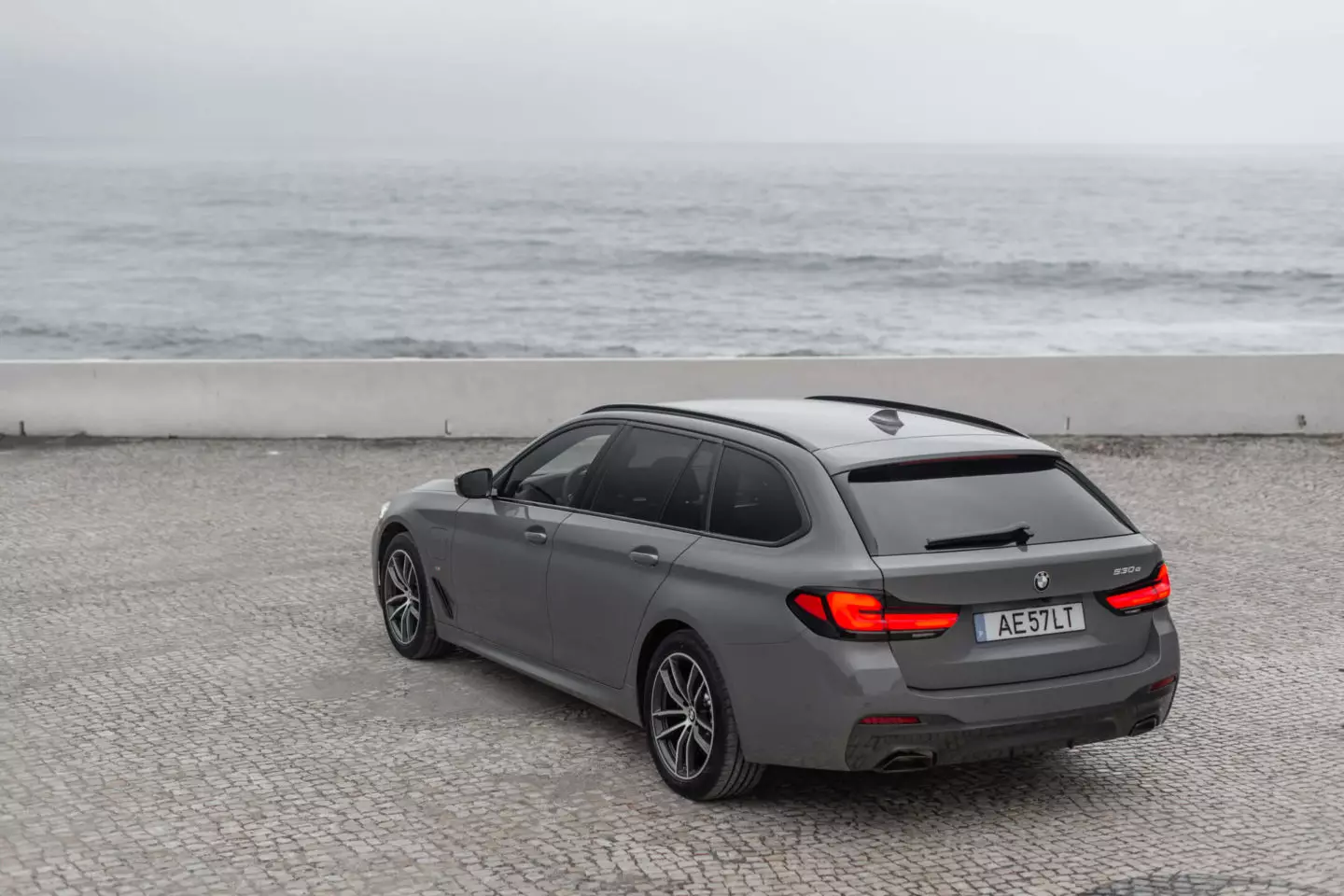
For the first time, the Series 5 Touring wins a plug-in hybrid option
there is life beyond the straights
The excellent soundproofing of these two BMW 530e's is just one of the qualities that make them excellent road warriors. The other is on-board comfort, starting with the very good riding position and ending up in the quality of the damping, tending towards smoother — long distances are a treat.
Don't be fooled by the smoothness and refinement displayed. Even though they are not the lightest or sportier BMW 5 Series at all, introduce them to a chain of curves more suitable for an MX-5 and they won't deny it. They change direction with determination, the somewhat smooth damping doesn't translate into lack of control and they abuse the accelerator a little more when exiting corners and you'll understand why rear-wheel drive remains the favorite of enthusiasts.
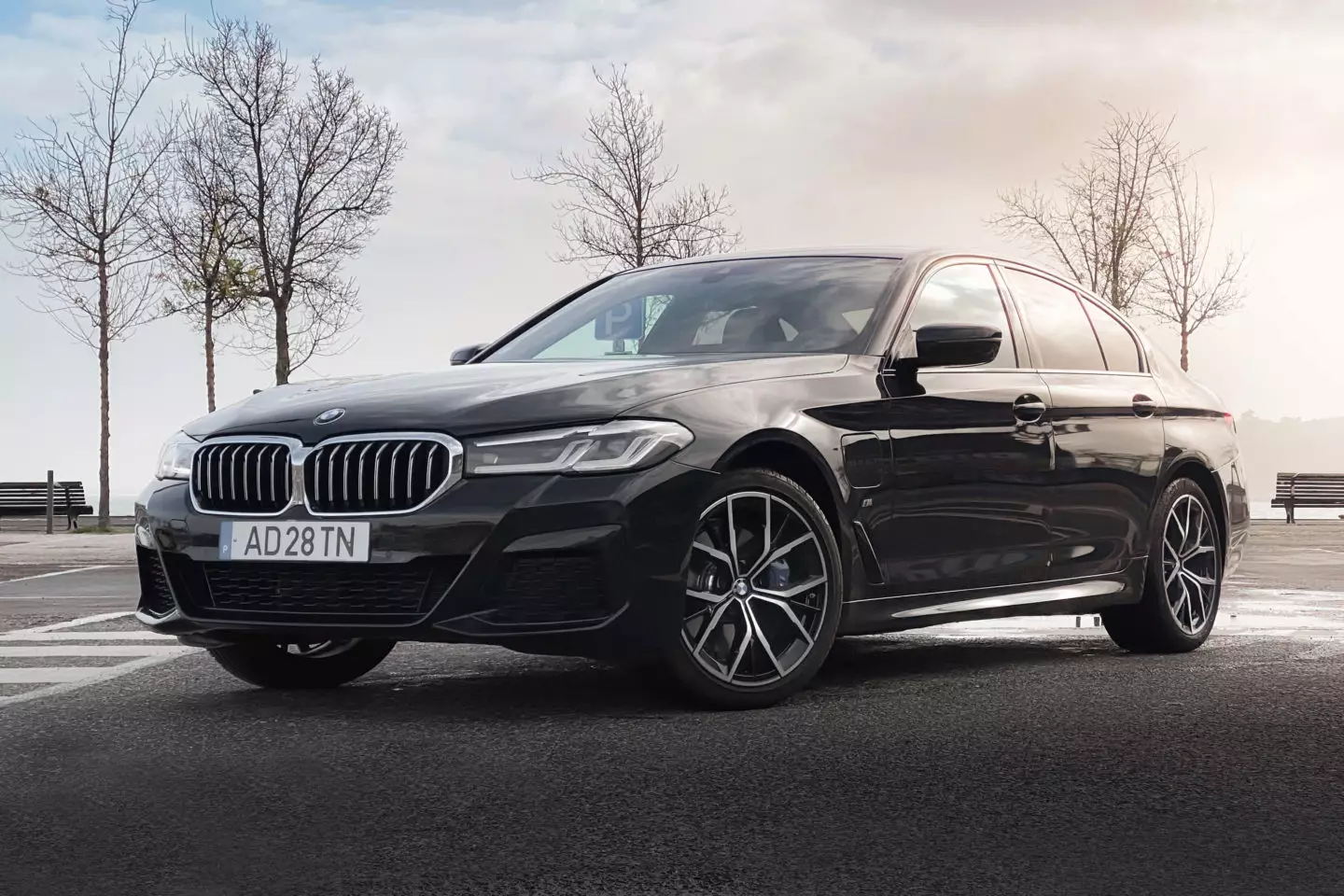
The dynamic balance is really good and doesn't reflect the added mass compared to other 5 Series combustion only and of similar performance.
Interestingly, the added ballast of the electric machine and battery feels more on the 530e Touring than on the 530e Berlina (when the paces are already too high). Not only because it is actually several tens of kilos heavier than the saloon, but also, I assume, because of the wheels that fitted it: 18-inch wheels and a higher profile tire compared to 19-inch wheels and tyres of lower profile of the saloon.
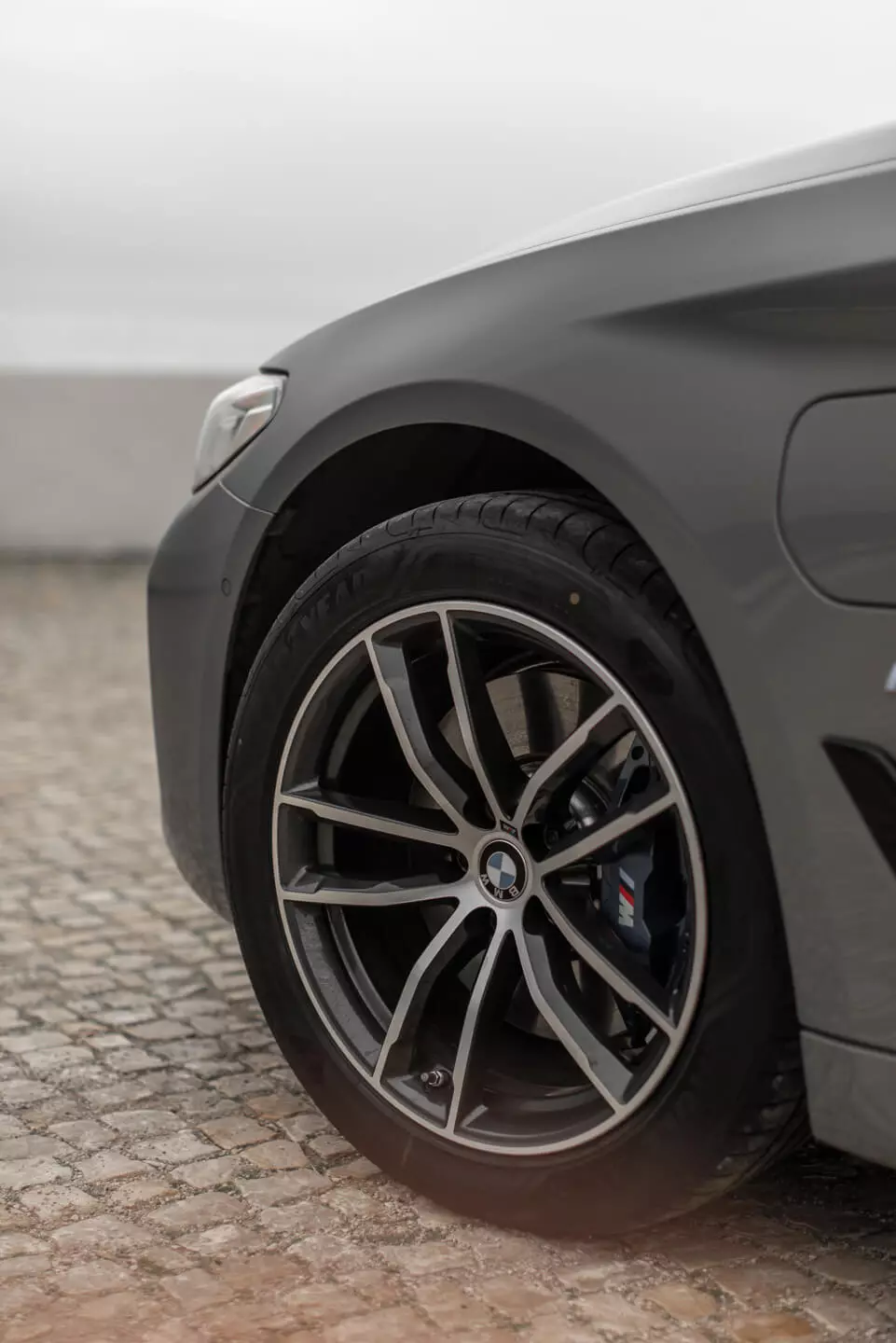
Regardless, both end up having that unusual quality of, at these hurried paces on winder roads, they appear to be smaller than they actually are given their demonstrated agility — even though the measuring tape is practically 5.0 m in length. and 1.9 m wide.
Negative points? The M leather steering wheel on both units. Too thick and even ends up stealing some sensitivity to procedures, in contrast to all other commands.
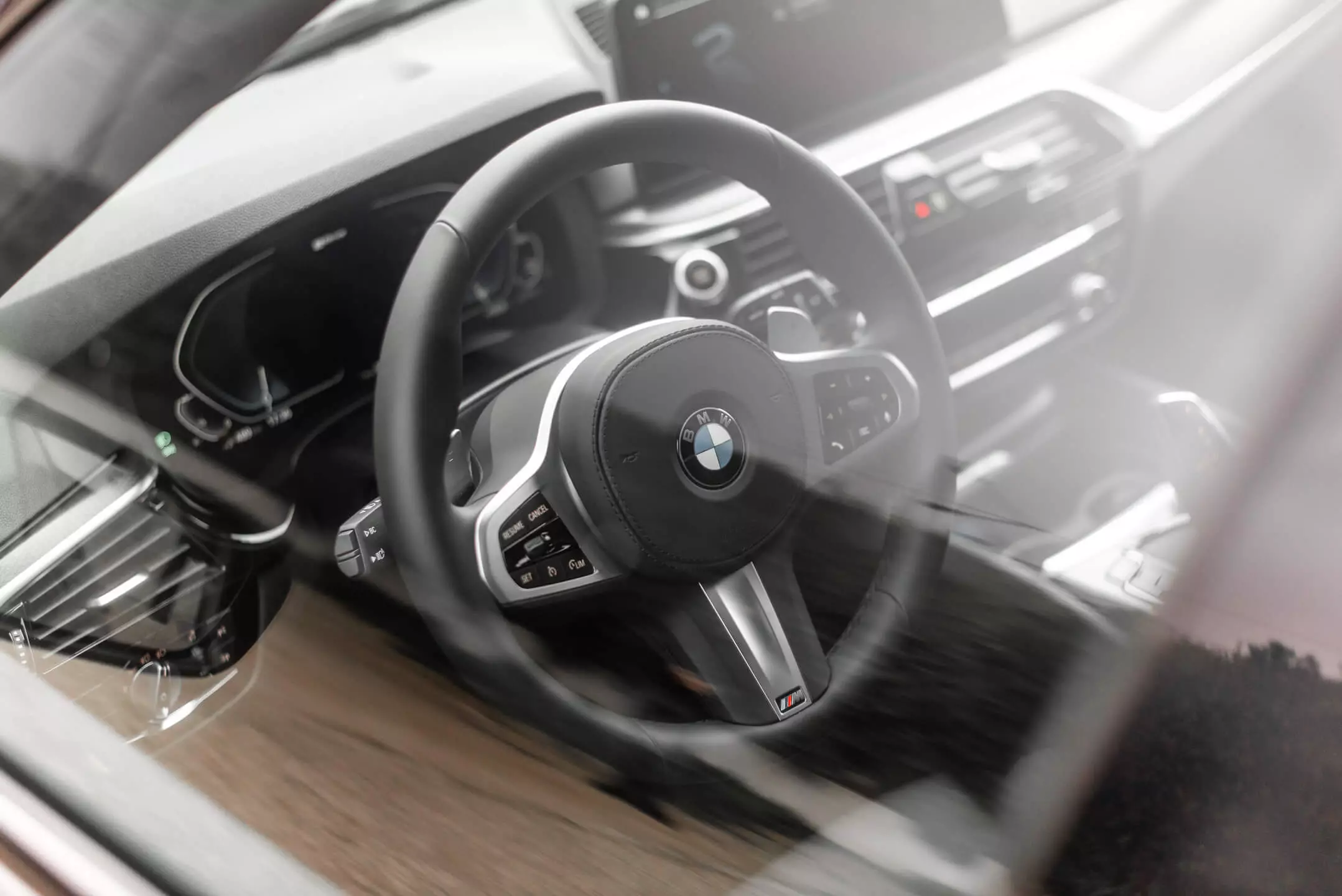
Executive? Yes. Familiar? Not really
If the combination of performance and delivery of its powertrain, and its excellent and complete dynamic repertoire impresses, the same cannot be said of its characteristics for those who want to make these 5 Series plug-in hybrids the car for the family.
There are several limitations, starting with the one directly associated with the fact that they are plug-in hybrids. Despite the battery being placed under the rear seat, the repositioning of the fuel tank (which was made smaller, lowering from 68 l to 46 l) on the rear axle made the luggage compartment floor higher, reducing the its full capacity. On the 530e sedan it went from 530 l to 410 l, while on the 530e Touring it went from 560 l to 430 l.
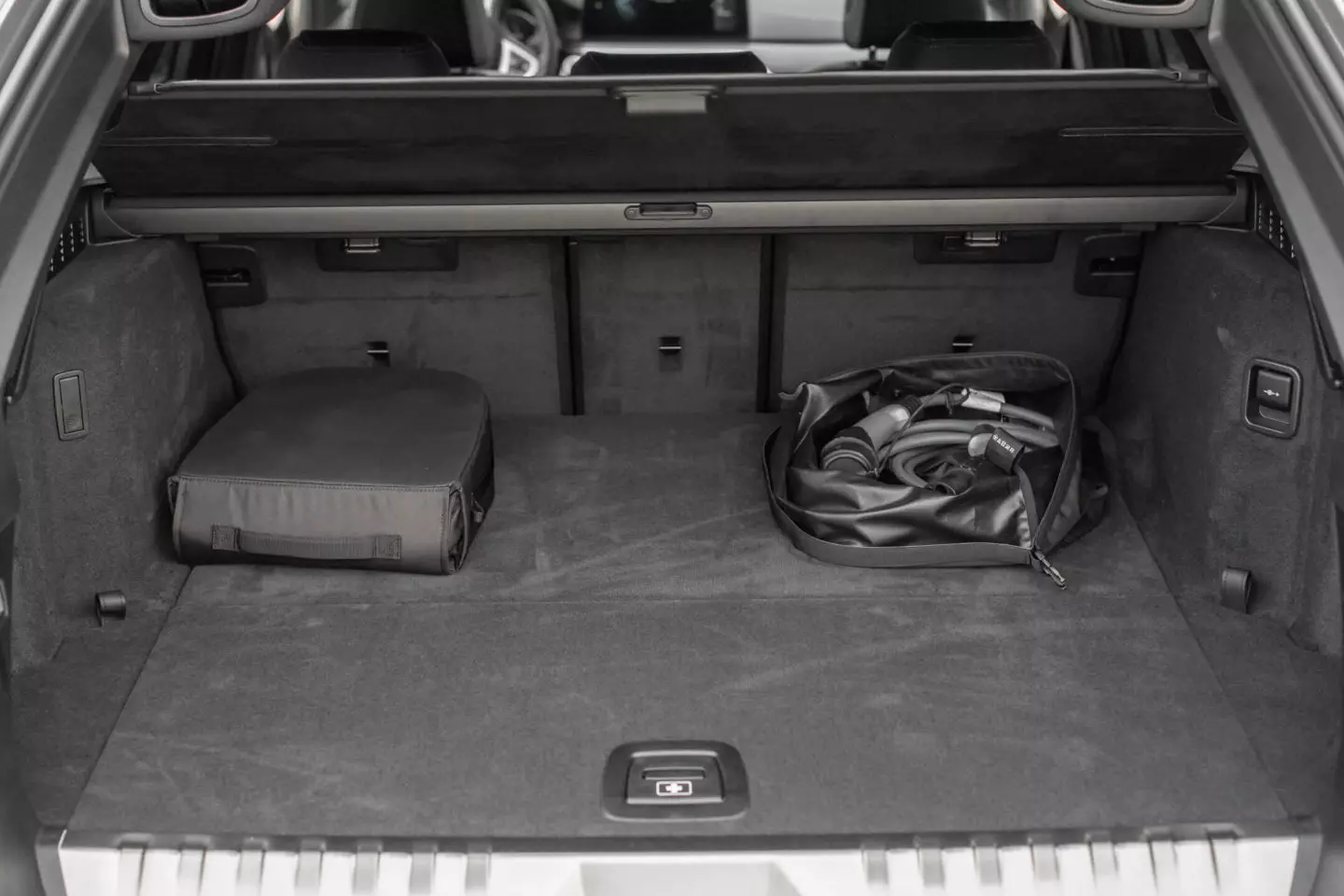
Naturally, it is the van with the highest capacity and best accessibility to the luggage compartment.
However, it should be noted that, unlike its rival Mercedes-Benz E-Class Station, which also has several plug-in hybrid variants — one of which with a diesel engine, which we've already tested — the BMW 530e Touring doesn't have a boot step that so much hinders its use.
The second limitation has to do with rear accommodations. Despite being advertised as having five seats, both the sedan and the van are, for all intents and purposes, four-seater. The transmission tunnel is tall and wide, which makes the space in half uncomfortable and practically useless. As if to compensate, the back of the center seat folds down to act as armrests for the other occupants.
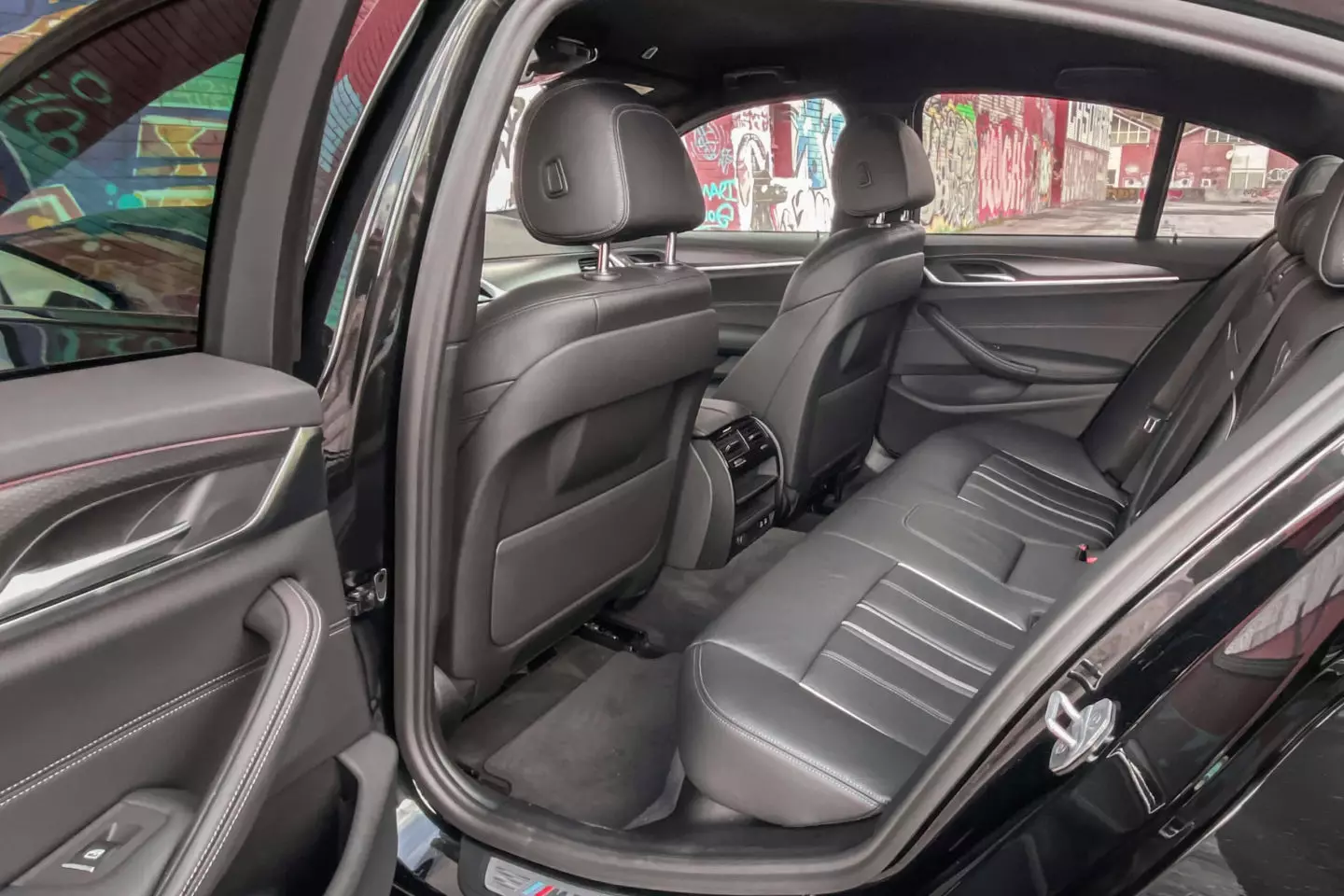
That said, the two rear occupants have plenty of room available for both their legs and their heads. More on the Touring than on the Saloon, whose horizontal roof line and distinctly contoured rear window allow the head to be further away from the vehicle's side, in addition to ensuring better entry/exit of the cabin.
Is the car/van right for you?
If electrics aren't for everyone yet, plug-in hybrids are even less so. Before opting for one, be it a BMW 530e or any other, it's a good idea to have an exact idea of the type of use you intend to make of the vehicle and understand if the characteristics they have are really suitable for that use. There are more options on the 5 Series, including the demonized Diesel ones, much more suited to those who spend most of their time on the highway.
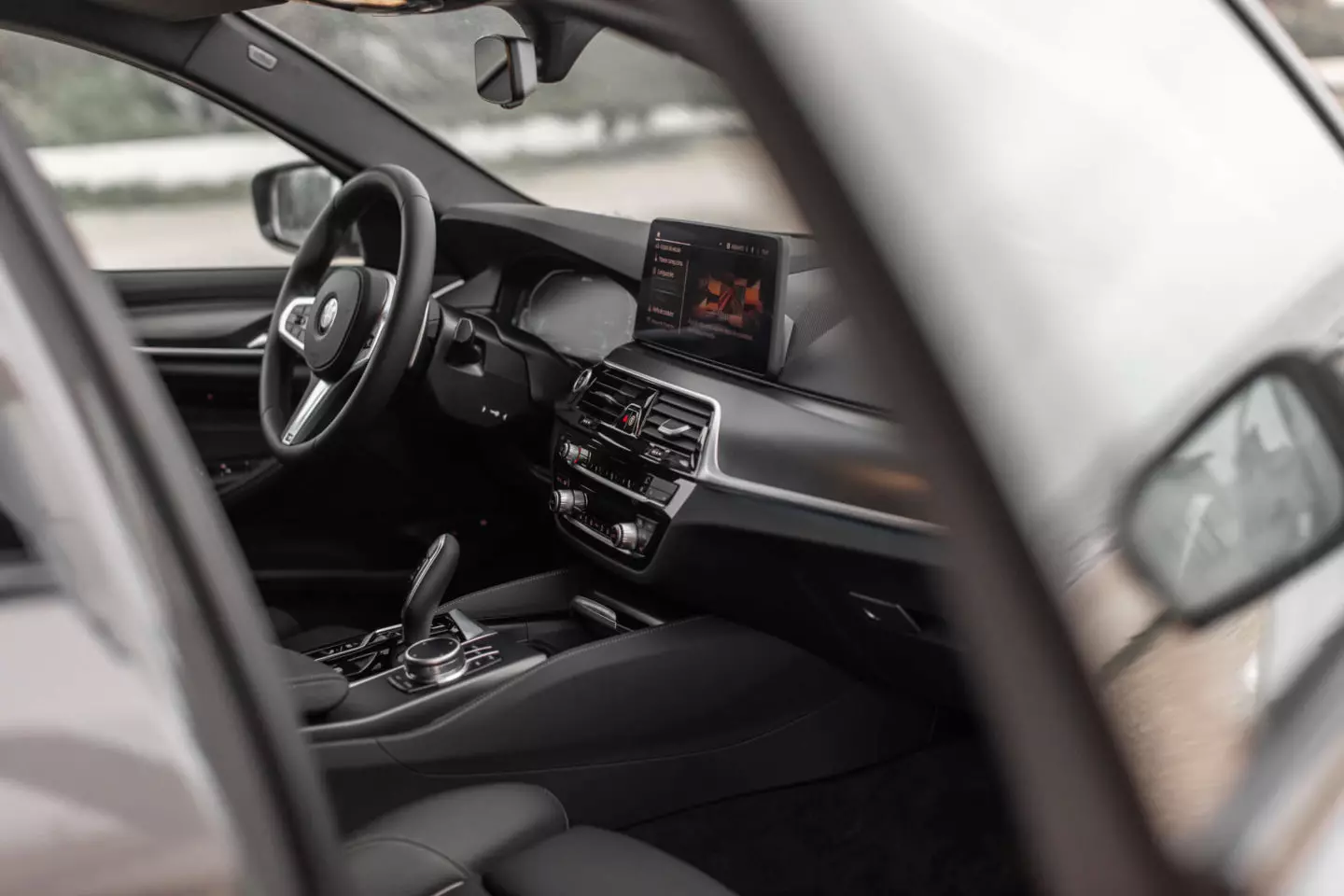
Inside Series 5: "Business as usual"
That said, like cars themselves, the arguments for opting for these 5 Series plug-in hybrids are pretty strong. Above all, it's all about your excellent driving experience and refinement on board. Put together a convincing performance and a highly accomplished driving and transmission group and it's hard to resist the charms of this executive proposal.
The 530e Touring is assumed to be the more appealing proposal of the two, even though it is slightly more expensive, although, if the additional space is not necessary, the 530e Berlina also has arguments in favor. One of them is its aerodynamics, which guarantees less resistance to the air, which means, everything else being equal, in a few kilometers more for each charge and a few tenths of a liter less in gasoline consumption.
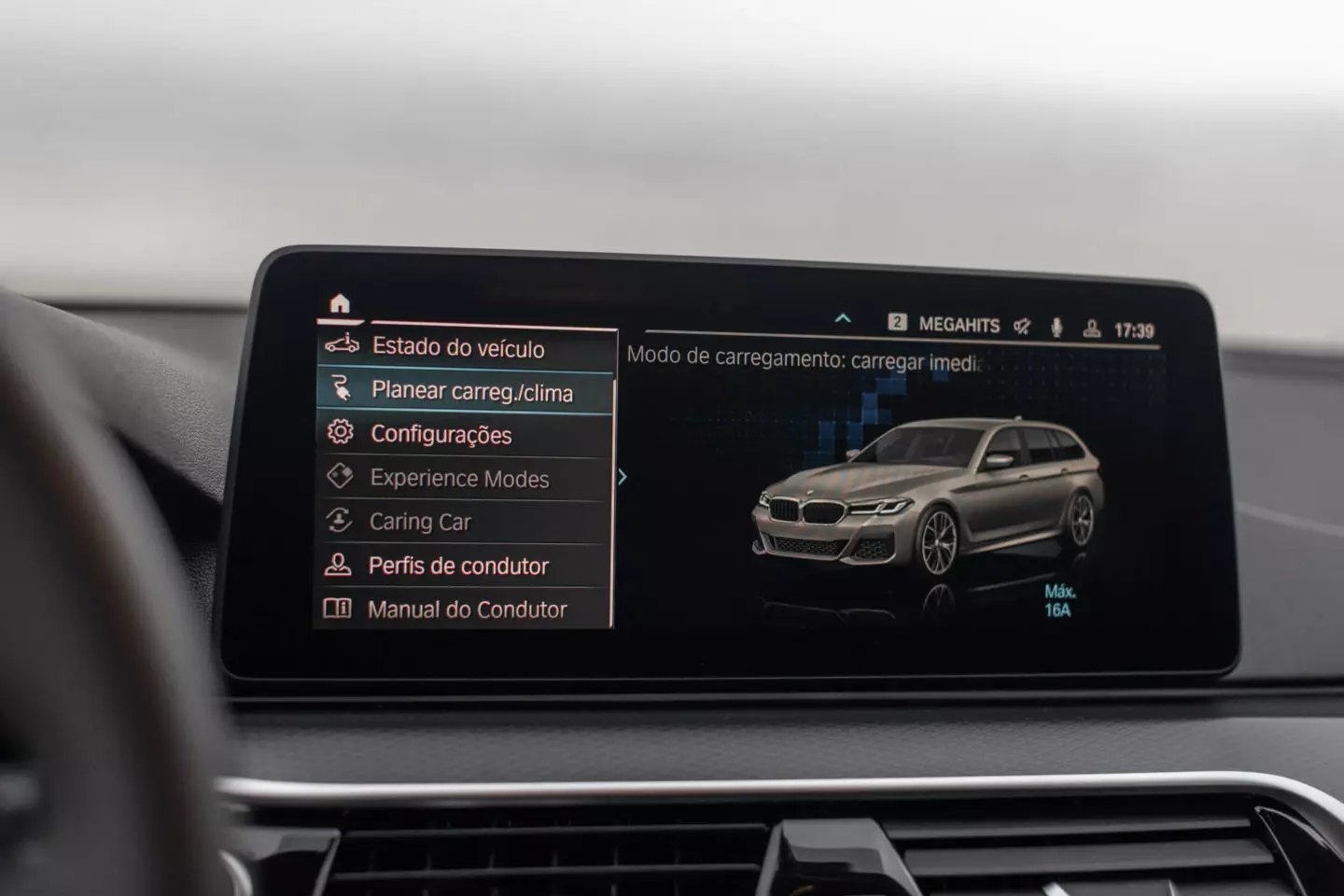
As a plug-in hybrid, the BMW 530e comes with specific menus that allow you to configure various options, such as loading planning.
BMW 530e Berlina: price from €65,700; price of the unit tested is 76,212 euros. Values in parentheses () in the technical specifications refer to the BMW 530e saloon.
